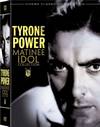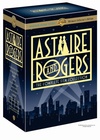


Errol Flynn & Olivia de Havilland
Filmography | Articles | Awards | Downloads | Bibliography | Links | Image Credits | Errol Flynn | Olivia de Havilland
| Article 2 |
With a Bow to Tennyson, the Strand Offers 'Charge of The Light Brigade'by Frank S. NugentNew York Times November 2, 1936, page 24The Frères Warner, bless 'em, may not give a hang for history, but they do know how to turn out a smashing and spectacular adventure film. "The Charge of the Light Brigade," which has taken what will unquestionably prove to be a long-term lease of the Strand, is the 1936 model of "Lives of a Bengal Lancer." Like its magnificently melodramatic predecessor, it is a virile and picturesque saga of blood and empire in India, with the usual treacherous Amir lurking in the one corner, the immaculately heroic Lancers in another and the middle ground a vivid splash of leopard hunts, native uprisings and outpost massacres. Do we hear a startled protest that the cavalry charge celebrated by Alfred, Lord Tennyson occurred in Crimea, not in Sirustan! Hear it we do and we hasten with the reassuring word that the Warners, bless 'em again, have not been caught napping over a book of movie boners. They have remembered it, although barely in the nick of time, and they have managed with an engaging air of credibility, to transfer their Amir and their Lancers to the filed of Balaklava for as gripping and glorious a spectacle as the screen has provided this year. That cavalry charge is its own excuse; we can marvel at it and revel in it, no matter by what bootstraps the Warners dragged it in. Still, it must be conceded that the Warners stretched the bootstraps to the limit. For reasons of their own, they have invented the Surat Khan of Suristan, who, losing a handsome annuity from Her Majesty's government, has entered a secret alliance with Russia on the eve of the Crimean War. Realizing that England, with troubles enough on the Continent, can be harried by an uprising on the Indian frontier, the Amir leads several minor forays and then wipes out and inadequately manned border outpost, killing men, women and children. To avenge this massacre the Twenty-Seventh Lancers dedicate themselves, and the opportunity comes at Balaklava when their young commander, Major Vickers, learns that Surat Khan is with the Russians, whose artillery and cavalry command the heights. Meanwhile, over the whine of bullets and the blare of bugles, there has been a triangular romance between the handsome major, his younger brother and the commandant's daughter. Defeated in his suit and fired by the memory of the Chukoti massacre, the major forges an order for the Light Brigade to attack. "Our objective," he tells his men, "is Surat Khan." And a picture, which already might have been accounted a larruping action tale, crashes into its spectacular climax when the gallant 600, spread across a flat valley rimmed with enemy batteries, charged with sabers forward and lances leveled through a deadly thunder of cannon and rifle fire. Tennyson described the charge and the Warner cameras have photographed it just that way. It is a sight to see. Although it is as a spectacle that the picture must be judged, the performances are uniformly sound. There can be no fault with Errol Flynn's portrait of the dashing Major Vickers, with Patric Knowles as his brother, Olivia de Havilland as the attractive, but thematically unnecessary, officer's daughter; Henry Stephenson as the War Office man, C. Henry Gordon as Surat Khan, or with such other bearers of the while man's burden in India as Nigel Bruce, Donald Crisp, David Niven and E.E. Clive. Spring Byington as a garrulous and match-making colonel's lady may be thanked for the picture's only comic touches and a fuller vote of appreciation must go to Michael Curtiz, the director; Sol Polito, the cameraman, and Leo Forbstein and Dr. Ernst Toch, its musical arrangers, for their splendid handling for their materials. While it smacks more of Kipling than of Tennyson, "The Charge of the Light Brigade" is a grand movie. © 1936 New York Times |
Return to the Index of Articles. |
| Current Contest Prize: |
|---|
| Now in Print! |
|---|
| Now on DVD! |
|---|
Buy Videos & DVDs |
|
Buy Movie Posters |
|
Buy Movie Posters |
|
Classic
Movie Merchandise |
|
![]() Printer-friendly version.
Printer-friendly version.
![]() Return
to the top.
Return
to the top.
Last updated:
December 16, 2008.
Reel Classics is a registered trademark of Reel Classics, L.L.C.
© 1997-2009 Reel Classics, L.L.C. All rights reserved. No
copyright is claimed on non-original or licensed material.
Terms of
Use.










